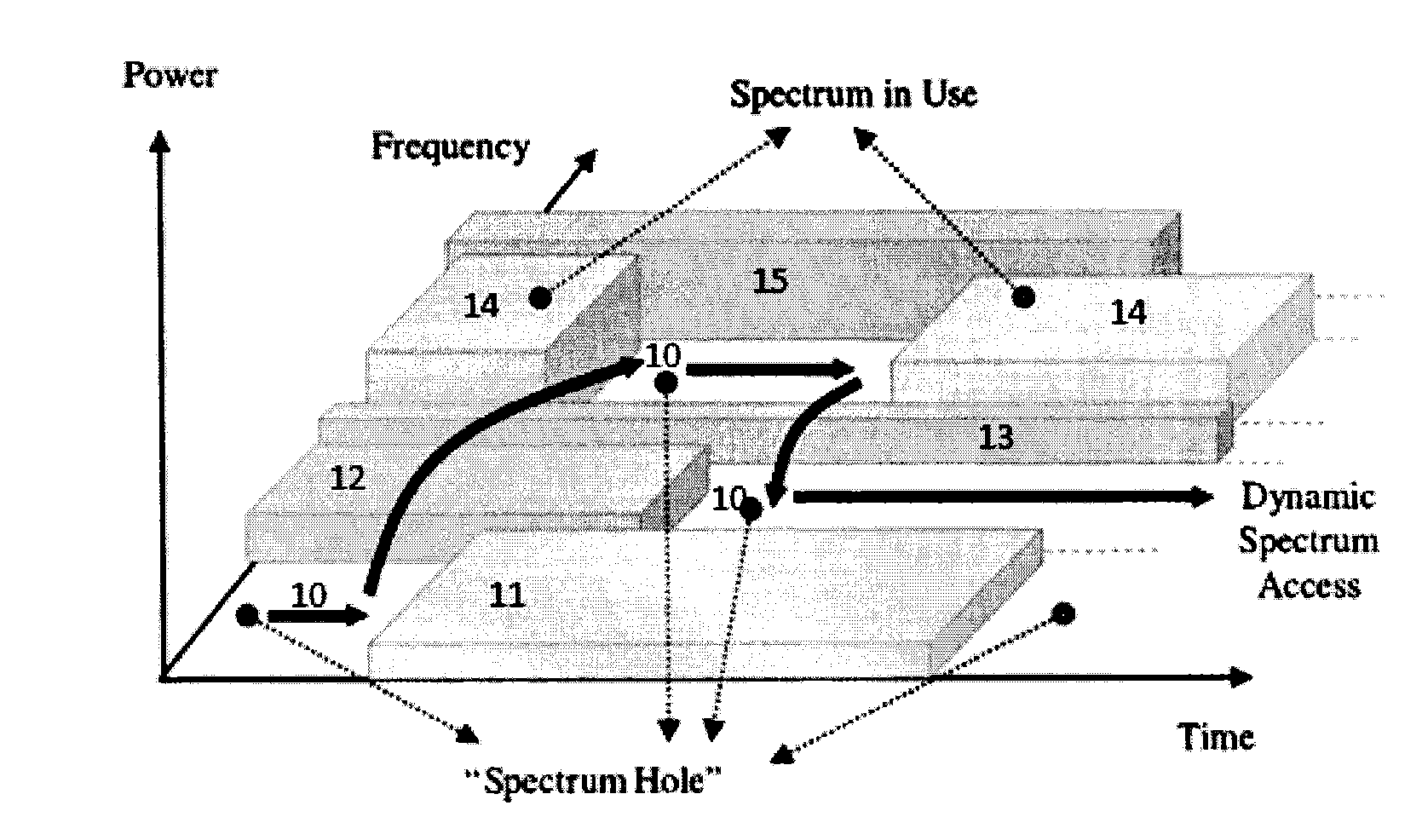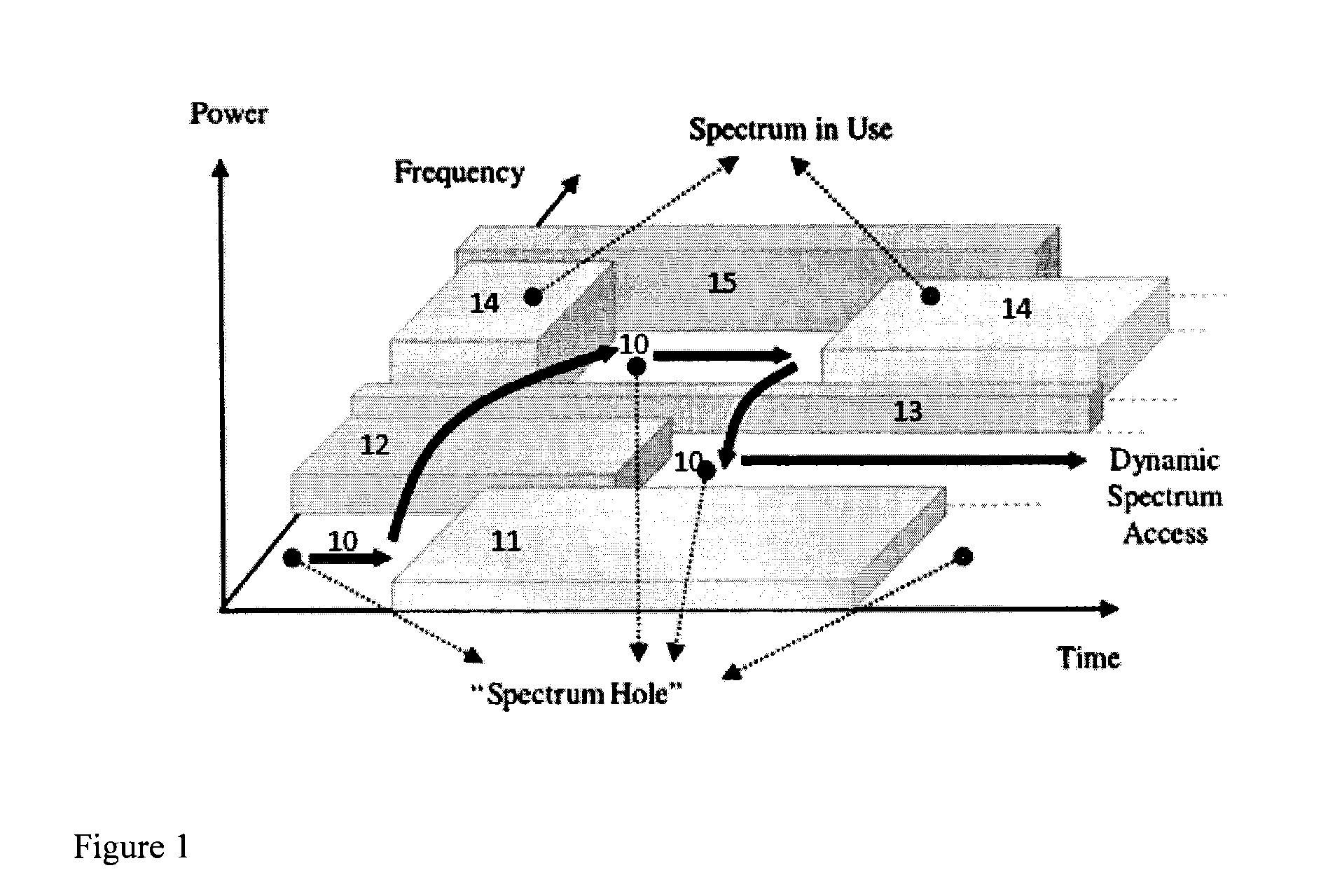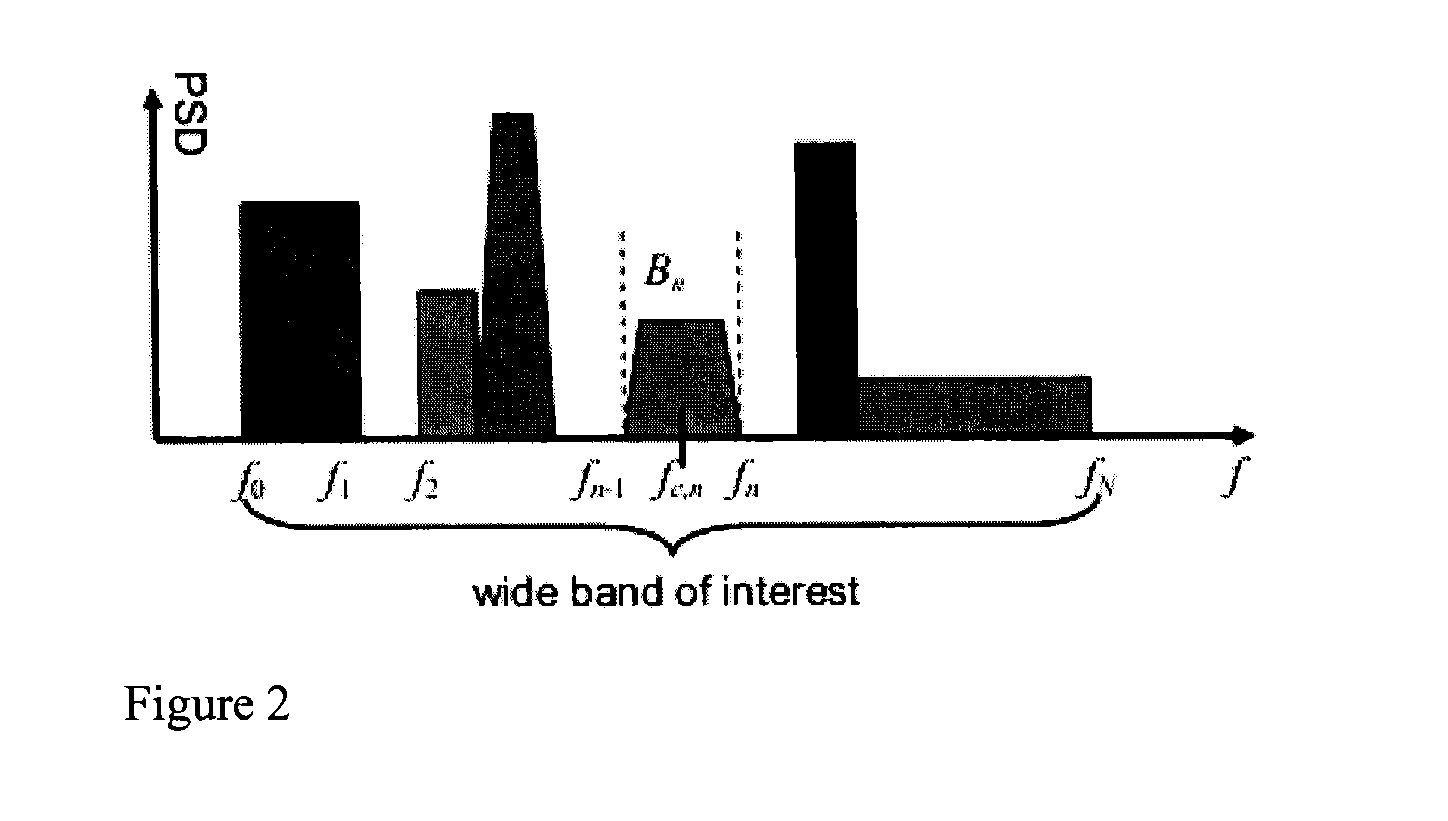So much so, that the current situation of commercial spectrum does not allow for new
wireless systems.
Note that the spectrum sensing operation is a very challenging task and needs to be accurate and efficient in order to enable the
Cognitive Radio system to work effectively.
Hence, this inefficient utilization of
licensed spectrum can be thought of as the outcome of wasteful static spectrum allocation.
Since most of the commercially available spectrum is already allocated, the real challenge is to share seamlessly the unused spectrum of the PU.
The limitations of this model are that it needs information about the unlicensed user's
signal modulation, activity patterns of the primary and secondary users, in addition to having control over the power levels of the SU as discussed in T. X. Brown, “An analysis of unlicensed device operation in licensed
broadcast service bands,” in First IEEE International Symposium on New Frontiers in Dynamic Spectrum Access Networks, 2005.
Also the
cognitive user may not be aware of the
exact location of the primary receivers, which makes it impossible to measure the influence of the
cognitive user's transmission on all the potential primary receivers.
The downside of the matched filtering technique is the amount of a priori information that is needed to demodulate the received signals, such as the pulse shape, bandwidth, modulation type, etc.
Unless the a priori information is not perfect, the
matched filter performs poorly.
Furthermore, the implementation of the
matched filter based sensing unit becomes impractically large since it would require dedicated receivers for each type of primary user signals as discussed in D. Cabric, S. M. Mishra, and R. W. Brodersen, “Implementation issues in spectrum sensing for cognitive radios,” in Conference
Record of the Thirty-Eighth Asilomar Conference on Signals, Systems and Computers, 2004., vol.
However, the complexity of the cyclic feature
detector comes from the facts that it requires the knowledge of different signal's modulation formats, as well as requires long observation times. These complexities make the feature detector implementation less favorable as compared to energy detector.
When looking at a
Fourier transform of a signal, it is impossible to tell when a particular event has happened.
This property, on one hand, does not negatively affect the suitability of FT to stationary signals, but, on the other hand, makes the FT unsuitable when the signal being analyzed is non-stationary.
Under this
scenario, it is inefficient to install multiple
narrowband BPFs at the radio front-end to perform the sensing task.
Alternatively, if only one
narrowband BPF is used to scan the entire
wideband (frequency range) in blocks, this becomes
time consuming hence reducing the overall performance of the cognitive radio.
If the
cognitive user (CR) decides an absence while the primary user (PU) is present; this error is represented with the probability of misdetection Pm, which would cause a substantial interference at the PU.
A high Pf implies spectrum inefficient utilization because of high false alarms.
A high Pf implies spectrum inefficient utilization because of high false alarms.
As with any wireless communication
system, the performance degrades in multipath
fading channels.
Similarly,
fading in wireless channels creates uncertainty in the SNR at the CR
receiver input, making it difficult for the CR to provide a reliable decision about the absence or presence of the PU, since when the CR is experiencing a deep
fading or shadowing due to large obstacles over the primary-to-secondary channel, the amount of energy observed during a
fixed time-bandwidth product may not be enough to decide about the presence of a PU.
However, this is not always possible due to constraints of the sensing period set by the
regulator.
For the MTM-SVD scheme described above, the complexity of the whole procedure is quite high.
Not only sending the K-dimensional vector from each CR to the
fusion center would increase lots of communication burden over the reporting channel, but the SVD operation on the matrix A(f) is also computationally very expensive.
Although, the eigenvalue based spectrum sensing technique provides very good results without any prior knowledge about the channel,
noise power, or PU signal, but the whole
decomposition process is quite computationally expensive.
Also the use of the
random matrix theory to set the threshold values makes it difficult to obtain the accurate closed
form expression for the thresholds.
On the other hand, when data fusion EGC is used, more feedback bits are required (m-bits per user, m≧1m≧1), which sacrifices the
spectral efficiency.
Because many CRs provide decisions, requiring significantly less data be reported to the
fusion center, the
hybrid data-
decision fusion method can substantially reduce the overall number of sensing bits over the reporting channel at the expense of a negligible loss in performance compared to EGC.
 Login to View More
Login to View More  Login to View More
Login to View More 


